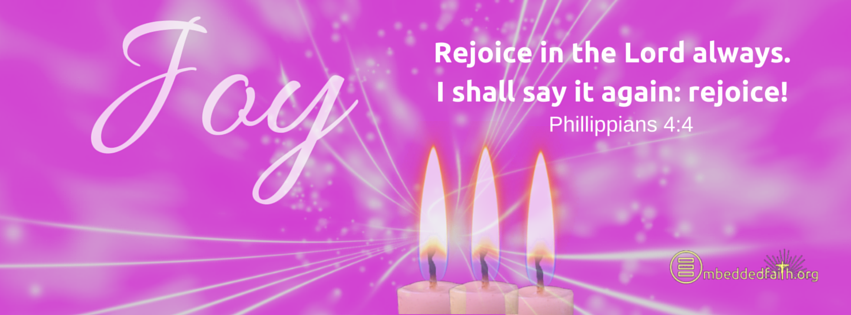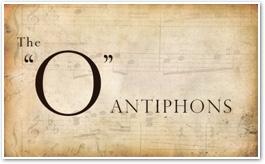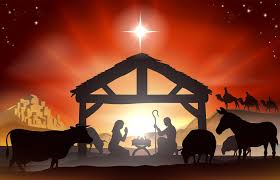
Today is Gaudete Sunday, the Third Sunday of Advent. Gaudete is the Latin word for “Rejoice,” and the pink (or rose) candle is lit on the Advent wreath.
The title of my post actually is the first part of the Entrance Antiphon from today’s Mass, and in addition to the pink candle being lit, the color rose may be used (in lieu of the purple used throughout Advent) for liturgical vestments and altar cloths and flowers may be added to decorate the interior of the church sanctuary.
So why all the fuss? Why all the rejoicing and extra decorations?
The answer is at the end of the very same entrance antiphon–because the Lord is near.
The entire season of Advent is all about preparation, but Gaudete Sunday is the Church’s way to signal to us that we need to kick our preparation into high gear. Why?
Because the Lord is near!
For those of us who might not have had that great an Advent so far, these last nine days are an opportunity to try again to prepare our hearts for the coming of the Lord.
Even if you haven’t been praying every day, make the commitment to do so for the next week. If you haven’t gotten to Reconciliation yet during Advent, make it a point to go. If the chaos of the season is overwhelming you, go and spend 10 minutes in the presence of the King of Peace in Adoration.
Whatever it is, do something to prepare the Way of the Lord in your heart and mind, so you can truly “Rejoice in the Lord always.”
Why? Because the Lord is near.
Another reason today is a day to rejoice, is that it also signals the beginning of a beautiful Church tradition that dates back to the eighth century–the “O Antiphons.”

The “O Antiphons” are prayed as part of the prayer of the Church from December 17 until the 23rd. Each of the O Antiphons is a name for Christ, and expresses the longing for the Messiah.
The names of Jesus in the O Antiphons are:
O Wisdom of our God Most High
O Adonai, ruler of the house of Israel
O Root of Jesse’s stem
O Key of David
O Radiant Dawn
O King of all nations
O Emmanuel
Each of these names is rich in imagery, and helps us to rememberwho it is that is coming to us–the King of Kings, the Lord of Lords, the Prince of Peace, but most importantly, Emmanuel–God with us.
For God is with us in all things–the good, the bad, and especially the ugly. (How much more ugly can you get than to be born in a stable with a bunch of animals and manure?)
Yet, He who is the King of Kings, He who could have chosenanywhere in the world to be born, comes to us in our poverty and ugliness.
And by doing so, He tells us that there is nothing so ugly or bad in our lives, or more importantly, within ourselves, that He isn’t capable of making good and beautiful–if we but come and adore Him.
And this is the inherent beauty of the O Antiphons. For by focusing upon a particular name of Jesus, the Church, through the gives us a simple means through which we can “step it up” to the next level during these last days of Advent.
Just as the O Antiphons use ancient biblical imagery drawn from the Old Testament to proclaim that the coming of Christ is not only a fulfillment of the hopes of the Jewish people, the O Antiphons proclaim that the the coming of Christ fulfills the hopes of all people throughout the world as well.
It is this reality–that Christ came for all people–that there is areason for joy, and why Jesus is the reason for the season.
It’s why Gaudete Sunday is such day a joyous day in which we “Rejoice in the Lord always; again I say, rejoice.”
For “Indeed, the Lord is near.”

Know of my prayers for each of you that these remaining days of Advent are blessed and grace-filled ones for you and your loved ones, and I hope to see you on the Way very soon.
If you are interested in a more in depth explanation of the Scriptural background of each of the O Antiphons, click here:https://www.catholiceducation.org/en/culture/catholic-contributions/what-are-the.html



